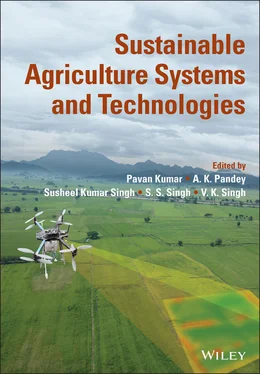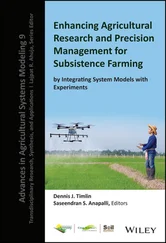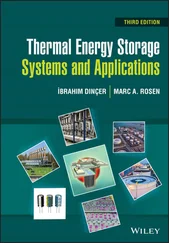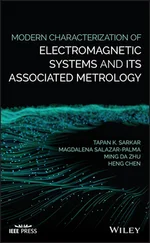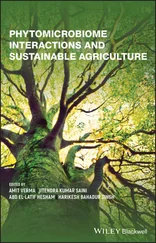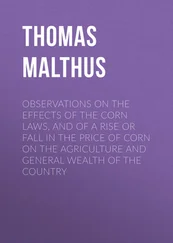Sustainable Agriculture Systems and Technologies
Здесь есть возможность читать онлайн «Sustainable Agriculture Systems and Technologies» — ознакомительный отрывок электронной книги совершенно бесплатно, а после прочтения отрывка купить полную версию. В некоторых случаях можно слушать аудио, скачать через торрент в формате fb2 и присутствует краткое содержание. Жанр: unrecognised, на английском языке. Описание произведения, (предисловие) а так же отзывы посетителей доступны на портале библиотеки ЛибКат.
- Название:Sustainable Agriculture Systems and Technologies
- Автор:
- Жанр:
- Год:неизвестен
- ISBN:нет данных
- Рейтинг книги:5 / 5. Голосов: 1
-
Избранное:Добавить в избранное
- Отзывы:
-
Ваша оценка:
- 100
- 1
- 2
- 3
- 4
- 5
Sustainable Agriculture Systems and Technologies: краткое содержание, описание и аннотация
Предлагаем к чтению аннотацию, описание, краткое содержание или предисловие (зависит от того, что написал сам автор книги «Sustainable Agriculture Systems and Technologies»). Если вы не нашли необходимую информацию о книге — напишите в комментариях, мы постараемся отыскать её.
A robust treatment of traditional and new techniques in sustainable agriculture Sustainable Agriculture Systems and Technologies,
Sustainable Agriculture Systems and Technologies
Sustainable Agriculture Systems and Technologies — читать онлайн ознакомительный отрывок
Ниже представлен текст книги, разбитый по страницам. Система сохранения места последней прочитанной страницы, позволяет с удобством читать онлайн бесплатно книгу «Sustainable Agriculture Systems and Technologies», без необходимости каждый раз заново искать на чём Вы остановились. Поставьте закладку, и сможете в любой момент перейти на страницу, на которой закончили чтение.
Интервал:
Закладка:
Keeping in view, the positive effect on milk production and wider scope of applicability among smallholders, TMR and homemade balanced concentrate feed were evaluated through, two trials to assess their impact of feeding on milk yield, intake of nutrients, and cost of milk production in crossbred dairy animals.
3.2 Materials and Methods
3.2.1 Effect of TMR on Milk Yield and Nutrients Digestibility in Crossbred Cows
Annual cereal and legume fodders were grown during rainy and winter season under irrigated system at ICAR Research Complex for Eastern Region, Patna, under subtropical hot and humid climate. The soils were neutral in pH and alluvial‐clay in nature. Multicut sorghum as cereal and rice bean as legume were grown during rainy season. Whereas, oat as cereal and berseem as legume fodder were grown during winter season on the same land on relay system. To study the effect on milk production and nutrient digestibility in first lactating crossbred cows, two feeding experiments were conducted for 60 days duration each during rainy and winter seasons on TMR. In experiment‐I, six cows were distributed into two groups having three cows in each group. For preparation of TMR, wheat straw 2 kg, chapped green forages (multicut sorghum 25 kg and rice bean 2 kg) 27 kg, and concentrate feed (17% dietary CP) 5 kg were mixed together with little water to make sani . The above TMR was offered to each cow of T1 group daily in dividing doses i.e. morning and evening. The cows of group T2 were fed the same quantity of above feed ingredients separately. At first, wheat straw and concentrate feed was offered after mixing with water and then a gap of one to two hours un‐chapped green forages were fed. A total of 10.68 kg dry matter (DM) per day per head was provided to both the groups. Similarly, experiment‐II was conducted in six cows following previous feeding and management schedule. During winter season, however, wheat straw 2 kg, chapped green forages (oat 15 kg and berseem 16 kg) 31 kg and concentrate feed (16.5% dietary CP) 4.5 kg constituted the TMR. Total 11.28 kg DM per day per head was provided to the cows in both the groups. At the end of the feeding experiment, a digestion trial of five‐day duration was conducted in both the experiments. Feed offered, residues and feces were collected daily for DM and CP estimation (AOAC 2005). The dry matter intake (DMI) per 100 kg body weight was calculated. The gross energy (GE) was determined in pooled dry samples. The digestibility of DM and CP, digestible energy (DE) values were calculated and analyzed statistically (Snedecor and Cochran 1994).
3.2.2 Effect of Homemade Balanced Concentrate Feed on Milk Yield and Nutrients Intake in Crossbred Cows
For the development of ration, four low‐cost homemade balanced diets were prepared varying in composition of the different ingredients with locally available feed resources and crop residues available with farmers of different agro‐climatic zones of Bihar. Composition of diets has been given in Table 3.1. For the evaluation of the diets, 16 crossbred cows (HF × Indigenous) of similar parity (first and second), age (26–35 months), and body weight (365.2 ± 3.66 kg) were divided into four groups and fed concentrate mixtures I–IV, respectively at rate of 1 kg concentrate per 2.5 kg of milk yield plus 2 kg for maintenance as per the schedule followed by farmers in the region. Wheat straw and Sorghum fodder were offered ad libitum as source of dry and green fodder, respectively. The study was continued for 35 days during which daily milk yield and its compositions were estimated. Before the experiment, all the animals were fed balanced concentrate feed available in the market at the same rate as used in the experiment along with similar green and dry fodder. Pre‐experiment milk yield of each animal was recorded for 15 days, which was compared with the milk yield of experimental period for each group. Other feeding and management practices were the same. Daily feed offered and residues left were collected daily for DM and CP estimation (AOAC 2005). Body weight of each animal was recorded at the beginning and at the end of the experiment for two consecutive days. Based on these data, DMI per 100 kg body weight was calculated. Data were analyzed statistically (Snedecor and Cochran 1994).
Table 3.1 Composition of home‐made balanced concentrate mixtures.
| Ingredients | Concentrate mixture (% fresh weight basis) | |||
|---|---|---|---|---|
| CM‐I | CM‐II | CM‐III | CM‐IV | |
| Crushed maize/wheat/broken rice | 30 | 25 | 20 | 35 |
| Wheat bran | 15 | 10 | 10 | 0 |
| Rice polish | 0 | 0 | 15 | 20 |
| Deoiled rice bran | 15 | 20 | 10 | 0 |
| Mustard cake | 7 | 5 | 16 | 20 |
| Linseed cake | 12 | 15 | 15 | 15 |
| Lentil/arhar/gram chunies | 18 | 22 | 11 | 7 |
| Mineral mixture | 2 | 2 | 2 | 2 |
| Salt | 1 | 1 | 1 | 1 |
| Total | 100 | 100 | 100 | 100 |
| CP% (DM basis) | 18.04 | 17.99 | 18.60 | 18.63 |
| TDN% (DM basis) | 68.51 | 67.34 | 68.92 | 71.59 |
3.3 Results and Discussion
3.3.1 Effect of TMR on Milk Yield and Nutrients Digestibility in Crossbred Cows
The bio‐mass yield and protein content of different fodder crops used in the experiment are presented in Table 3.2. The productivity of cereal crop was observed higher than the leguminous forages in rainy season whereas opposite trend was observed in winter season. Number of cuts of fodder actually made the difference of biomass yield. The values on fodder biomass yield corroborate with the findings of Pandey and Roy (2011), Gupta and Dey (2015), and Gupta et al. (2016). The DM content of forages varied from 11.65 to 17.19% while CP content varied from 8.72 to 11.14% for cereal forages and 15.30 to 15.83% in leguminous forages. The DM and protein content of cereal (sorghum and oat) and leguminous (berseem and rice bean) fodder are in close agreement with the finding of Banerjee (2000), Gupta and Dey (2015), and Gupta et al. (2016). The minute variations in compositions may be attributed to variety of forage, soil quality, number of cuts, and management practices adopted. Feeding of TMR resulted in higher DMI (kg/100 kg body weight) by 15.92 and 2.41%, respectively in T1 group in both the experiments in comparison to group T2 where feeds were offered separately ( Table 3.3). Significantly higher ( p < 0.01) DMI was observed in T1 (TMR fed) during experiment 1 (rainy season) when multicut sorghum was used as green fodder. However, total DMI did not differ significantly between groups in experiment II (winter season). This may be attributed to the succulent form of forage oat and berseem which included both in TMR and separate feeding system. Higher intake of DM, CP, and DE was also observed by Khan et al. (2010) in crossbred cows fed densified complete feed. Gupta et al. (2016) observed that feeding of concentrate feed at 1.5% of body weight in TMR increased DMI in crossbred heifers. However, Kajla et al. (2019) reported that DM intake was nonsignificant in TMR and non‐TMR groups in crossbred cows. Similar results were also reported by Raja Kishore et al. (2013), who observed nonsignificant DM intake (kg/day) in TMR and non‐TMR fed buffalo bulls. This may be attributed to the sorting of feed ingredients by animals fed roughage and concentrate separately.
Table 3.2 Season‐wise production potential of different fodder.
Читать дальшеИнтервал:
Закладка:
Похожие книги на «Sustainable Agriculture Systems and Technologies»
Представляем Вашему вниманию похожие книги на «Sustainable Agriculture Systems and Technologies» списком для выбора. Мы отобрали схожую по названию и смыслу литературу в надежде предоставить читателям больше вариантов отыскать новые, интересные, ещё непрочитанные произведения.
Обсуждение, отзывы о книге «Sustainable Agriculture Systems and Technologies» и просто собственные мнения читателей. Оставьте ваши комментарии, напишите, что Вы думаете о произведении, его смысле или главных героях. Укажите что конкретно понравилось, а что нет, и почему Вы так считаете.
